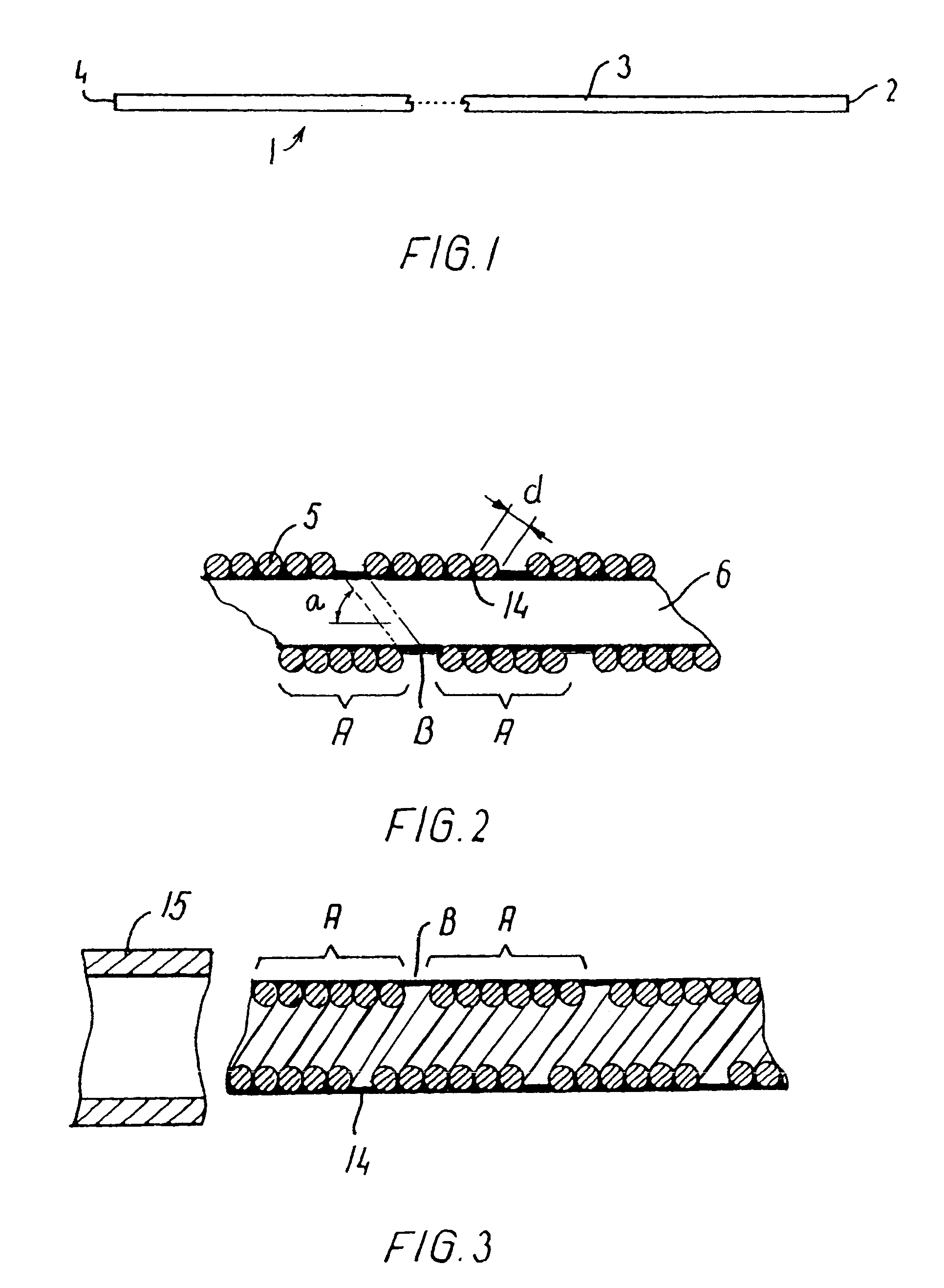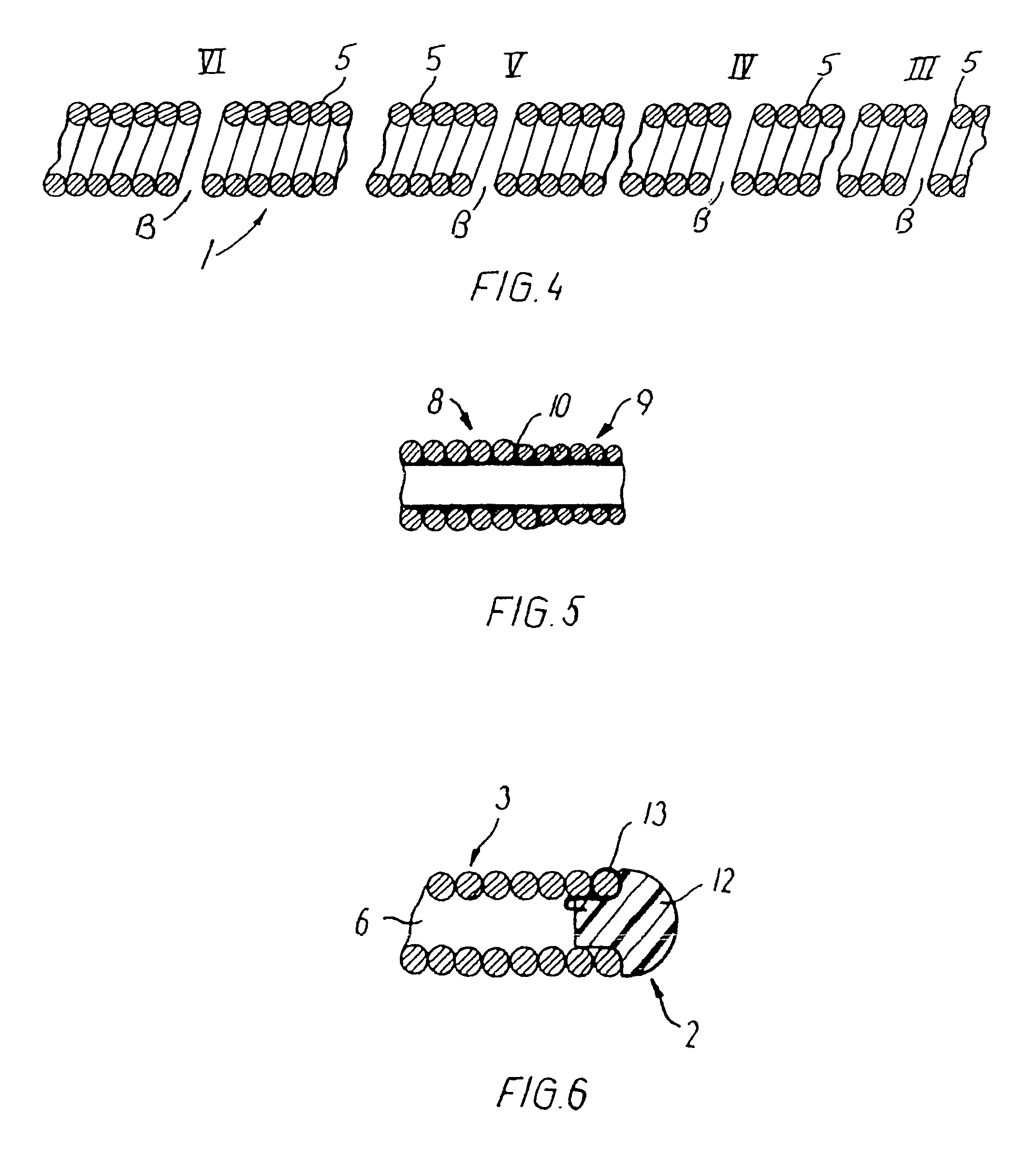Endovascular medical device with plurality of wires
a medical device and plurality of wires technology, applied in the field of medical devices, can solve the problems of increasing the difficulty of advancing the central member through the catheter lumen, affecting the stability of the catheter,
- Summary
- Abstract
- Description
- Claims
- Application Information
AI Technical Summary
Benefits of technology
Problems solved by technology
Method used
Image
Examples
example 1
[0078]A catheter was made of a helically wound row of four wires of 0.35 mm wire diameter. The body portion of wound wires had initially an outside diameter of 1.67 mm and an inner lumen of 0.97 mm. A coating of PTFE of a minimum thickness of 0.1 mm was applied onto the inside of the catheter. The catheter was set in a complex curved shape involving three consecutive loops of a loop diameter of 24 mm axially separated by two loops of a loop diameter of 18 mm and a number of further turns representative of a complex vascular structure. Then the body portion of the catheter was manipulated and it proved to be easily pushed forward and retracted as well as easily torqued. Then a guidewire was pushed forwardly in relation to the body portion, and it proved to be easily pushed out past the distal end of the catheter without causing noticeable flexion or movement of the catheter.
example 2
[0079]A catheter was made of a helically wound row of five wires of 0.30 mm wire diameter. The winding of a first segment of the body portion was made with an outside diameter of 1.20 mm and an inner lumen of 0.6 mm. Another segment was made up of a second helically wound row of four wires of 0.15 mm wire diameter. This segment had a length of 20 cm and an outside diameter of 1.20 mm and an inside diameter of 0.9 mm. The segments were joined by laser welding. The catheter body was provided with a flexible coating on its outside. The catheter was advanced through a complex curved vascular system involving several consecutive retrograde turns in vessels having a lumen of only 2 mm and less. Then the catheter was torqued and moved both forwardly and backwardly without any problems.
example 3
[0080]A catheter was made of a first helically wound row of eight wires of 0.075 mm wire diameter. The winding was made with an outside diameter of 0.25 mm and an inner lumen of 0.1 mm. The body portion had a length of 160 cm and was coated with a hydrophilic material of polyacrylamide on its outside surface. When tested the catheter shows no problems. After placing the catheter in a very complex pattern involving several sharp turns (see an example in FIG. 9), a guidewire could be advanced with only very low friction, and after removal of the guidewire, a fluid could be injected through the catheter without leakage through the coating.
[0081]When the catheter is to be introduced into the vascular system there is firstly established a percutaneous puncture site, e.g., by the Seldinger technique, or an existing puncture site is used. Then the body or shaft portion of the catheter is inserted through the cannula, sheath or hemostatic valve at the puncture site and the catheter is advan...
PUM
| Property | Measurement | Unit |
|---|---|---|
| pitch angle | aaaaa | aaaaa |
| pitch angle | aaaaa | aaaaa |
| pitch angle | aaaaa | aaaaa |
Abstract
Description
Claims
Application Information
 Login to View More
Login to View More - R&D
- Intellectual Property
- Life Sciences
- Materials
- Tech Scout
- Unparalleled Data Quality
- Higher Quality Content
- 60% Fewer Hallucinations
Browse by: Latest US Patents, China's latest patents, Technical Efficacy Thesaurus, Application Domain, Technology Topic, Popular Technical Reports.
© 2025 PatSnap. All rights reserved.Legal|Privacy policy|Modern Slavery Act Transparency Statement|Sitemap|About US| Contact US: help@patsnap.com



